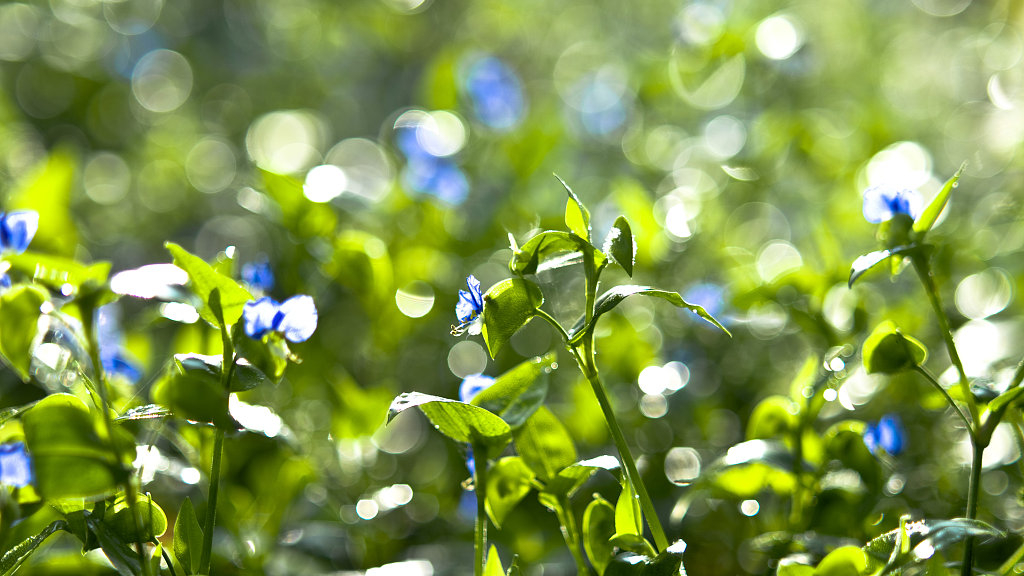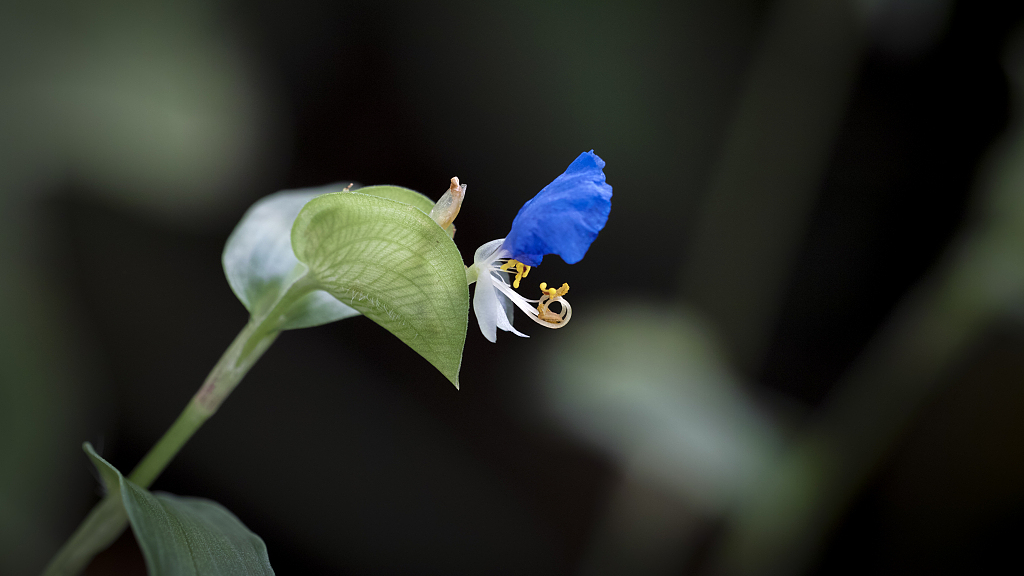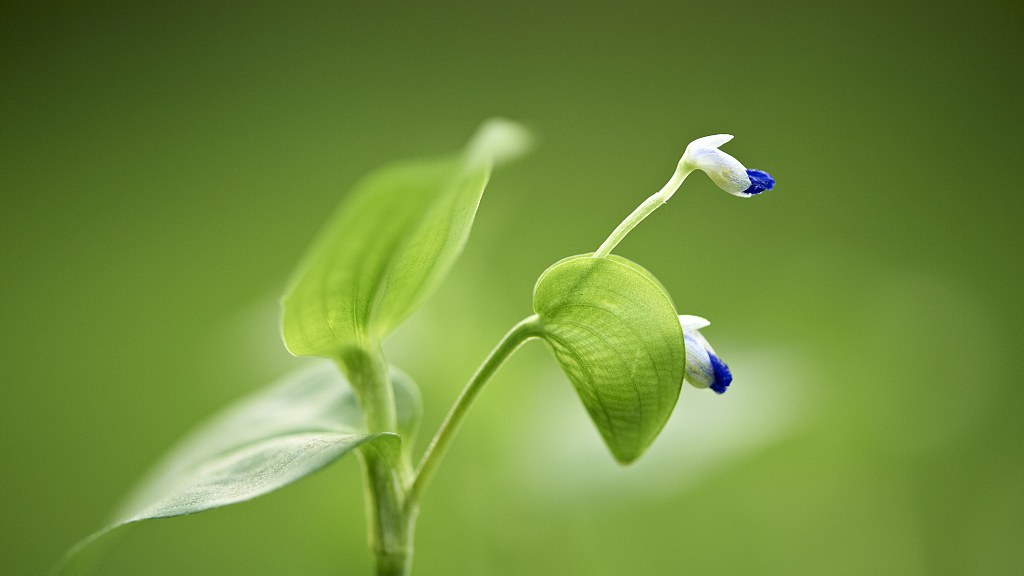The Asiatic dayflower is native to East Asia and Southeast Asia. In China, the plant is common and can be found in moist, open places.

The Asiatic dayflower is easy to find in China, especially in southwest China's Yunnan Province. /VCG Photo
The Asiatic dayflower is easy to find in China, especially in southwest China's Yunnan Province. /VCG Photo
As its name implies, the blooms only last for one day. Its Chinese name is "Yazhicao," which means "duckfoot herb," because of its resemblance to a duck's foot. The flower often grows in damp areas, similar to a duck's natural habitat, and it's understood that where ducks step, this plant tends to grow.

The Chinese name of the Asiatic dayflower means "duckfoot herb," because of its resemblance to a duck's foot. /VCG Photo
The Chinese name of the Asiatic dayflower means "duckfoot herb," because of its resemblance to a duck's foot. /VCG Photo
The Asiatic dayflower has three petals, two of which are blue and large, and the third one is small and white. The seeds of the Asiatic dayflower have a strong self-sowing ability. Once they fall to the ground, a cluster of the plant will be found in a year. The newly sprouted seedlings initially have only a few leaves that curl slightly inward, like the ears of a rabbit.

The Asiatic dayflower has three petals, two of which are blue and large, and the third one is small and white. /VCG Photo
The Asiatic dayflower has three petals, two of which are blue and large, and the third one is small and white. /VCG Photo
Although the Asiatic dayflower is attractive, it is not a popular ornamental plant since its petals, especially the two blue petals, quickly distort when exposed to the sun.

The newly sprouted seedlings initially have only a few leaves that curl slightly inward, like the ears of a rabbit. /VCG Photo
The newly sprouted seedlings initially have only a few leaves that curl slightly inward, like the ears of a rabbit. /VCG Photo
It was popular in ancient China as a dye. However, the color quickly fades. The blue is only relatively dark when the object is initially dyed, but once it is rinsed, it becomes light blue. After a few days of sun exposure, it will gradually become a mixture of blue and yellow.
China's Flora Tour
From the wetlands along the coast to the dense rainforests hidden in southwestern China, all boast an array of plant species. In this series, CGTN will go on a tour to learn about some of the most representative floras in different provinces and see how they live in harmony with the local geography and climate.
(Cover image via VCG, designed by CGTN's Yin Yating.)
(If you want to contribute and have specific expertise, please contact us at nature@cgtn.com)